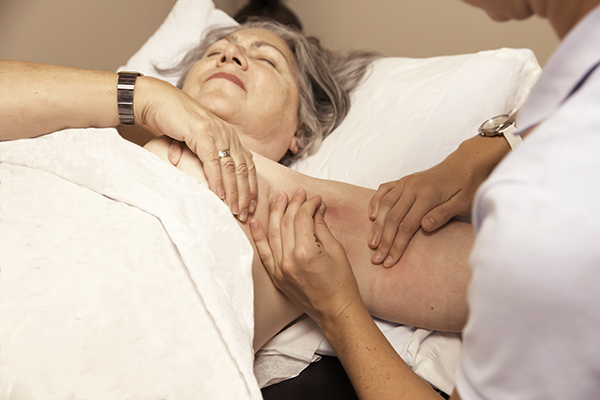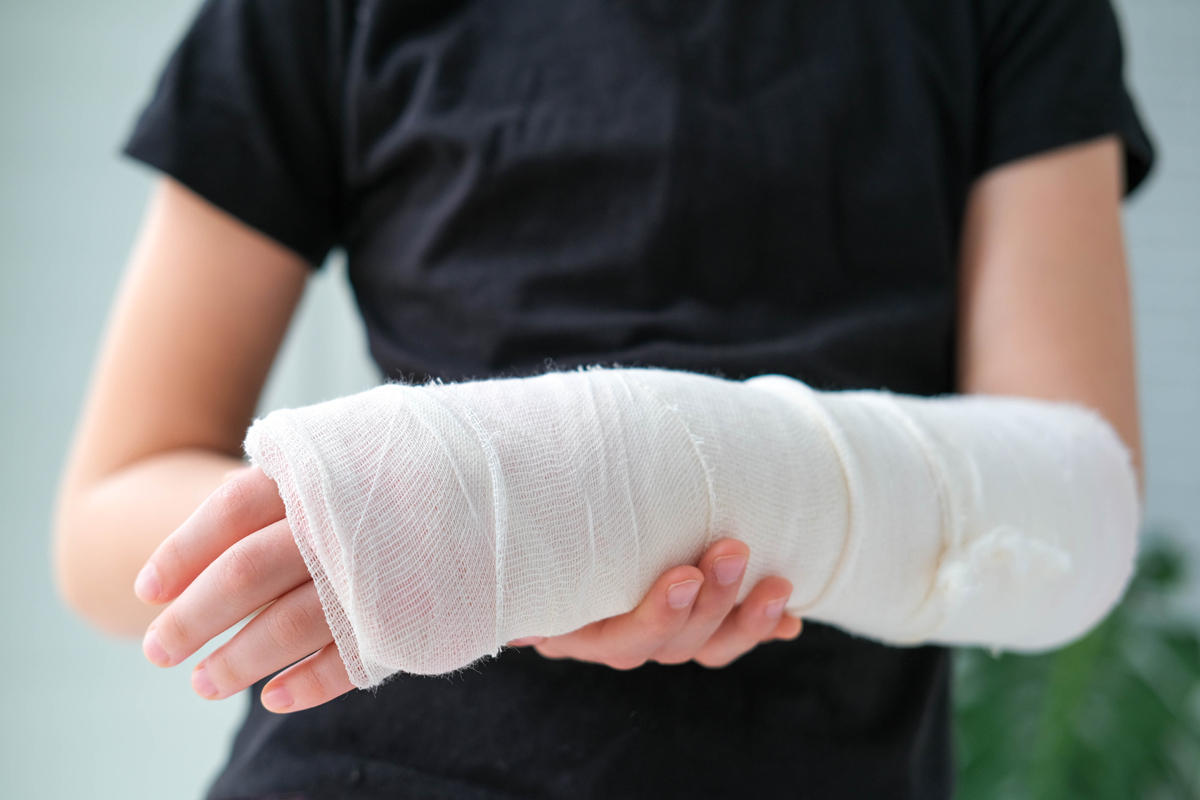Menu
Decongestive lymphatic therapy is a combination of manual lymph drainage, multi-layer bandaging, curative exercises, self-management education (including self-massage, self-bandaging and skin care), and compression garments. Decongestive lymphatic therapy is currently considered the most effective treatment available, and is delivered in two phases: the intensive decongestive phase and the maintenance phase.
Therapists are specifically trained and certified to practice decongestive lymphatic therapy. Consult the LAQ Resource Guide to find a certified therapist near you.
Your therapist will assess the stage and severity of your lymphedema and take a medical history before proposing an individualized treatment plan. Learning to manage your lymphedema through ongoing self-care is essential to the success of your treatment. Your therapist will give you the training, tools, and resources to guide you.
Manual lymph drainage is a gentle massage. Manual lymphatic drainage stimulates lymphatic circulation and redirects lymphatic fluid to areas of the body where the lymphatic system is functioning properly. Specific techniques are also used to reduce tissue hardening.
Multi-layer compression bandaging involves applying several layers to the limb, including a protective layer, a padding layer, and compression bandages. Alternative velcro compression bandage systems are available.
Multi-layer compression bandages help muscles stimulate lymphatic circulation and prevent lymph accumulation. They can be worn 24 hours a day. Multi-layer compression bandages are applied by certified therapists. People living with lymphedema, or those close to them, should learn how to apply these bandages.
A lymphedema-certified health care professional can show you how to perform a series of curative exercises to help relieve congestion in the affected limb.
Skin care provides a more resistant environment for the development of bacteria and fungi, the precursors of infection. Clean your skin daily with a pH-neutral soap and moisturize it with an emollient lotion containing mineral oils.



Once lymphedema has stabilized thanks to decongestive lymphatic therapy (2 weeks or more), your therapist will recommend the compression garment that’s right for you and help you make the transition to the maintenance phase and learning self-management skills.
The maintenance phase includes: wearing the compression garment(s), physical activity, skin care, weight control, and deep breathing combined with self-massage and/or professional manual lymphatic drainage.
Pneumatic pumps are sometimes used to treat lymphedema. However, they can give rise to complications by pushing fluids upwards, causing swelling and hardening of the tissues above the treated area. Pumps are most effective when combined with decongestive lymphatic therapy and under the supervision of a therapist.
Diuretics are not usually recommended for lymphedema, as they remove water and increase protein concentration, which can lead to tissue hardening and increased inflammation. However, you should continue to take this medication if it has been prescribed for another condition. Please discuss any questions you may have with your doctor.
It’s important to know that lymphatic surgery DOES NOT cure lymphedema. As Dr. Michel-Alain Danino, microsurgeon at CHUM, puts it: “After surgery, the patient must adapt to his or her new lymphedema.”
The Lymphedema Association of Québec provides support, education, and awareness to people living with lymphedema, as well as their families, friends, and healthcare professionals. We provide information and educate about lymphedema and its causes, risk reduction, and treatments for this chronic disease, and encourage scientific research leading to a cure.
Lymphedema Association of Québec
Therapeutic Support Program
1 866 979-2463
514 979-2463
Mailing address
CP 152, Bureau Chef Branch,
Saint-Hyacinthe,
QC, J2S 7B4
Telephone
1 866 979-2463 / 514 979-2463
Email
aql@infolympho.ca
Website
www.infolympho.ca
© 2023 Lymphedema Association of Québec. All rights reserved. | Credits